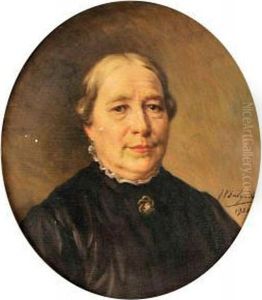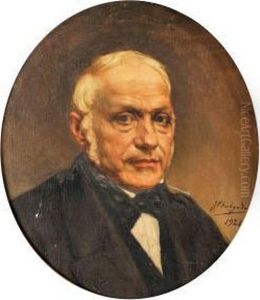Veloso Salgado Paintings
José Maria Veloso Salgado was a prominent Portuguese painter, born in 1864 in Seia, Portugal. Known for his skillful work in the Naturalist and Symbolist movements, Veloso Salgado became one of the most respected artists of his time in Portugal. He studied at the Lisbon School of Fine Arts, where he honed his craft and developed a keen interest in the human form and historical themes, which would dominate much of his work.
After his initial education in Lisbon, Veloso Salgado furthered his studies in Paris, where he was influenced by the French academic painting tradition. This period was crucial for his development as an artist, as he absorbed the techniques and philosophies of the Parisian art scene. He was particularly influenced by the works of Jean-Léon Gérôme, a leading figure in French academic art, adopting a meticulous approach to painting and a fascination with classical and orientalist themes.
Upon returning to Portugal, Veloso Salgado embarked on a successful career, receiving commissions for various high-profile projects, including religious and historical paintings for public buildings and churches. His work was characterized by its detailed realism, dramatic use of light, and classical inspiration. Among his most celebrated works are his murals for the São Vicente de Fora Monastery in Lisbon, which are regarded as masterpieces of Portuguese art.
Throughout his career, Veloso Salgado also dedicated himself to education, teaching at the Lisbon School of Fine Arts. His influence extended to a new generation of Portuguese artists, as he imparted his knowledge and passion for the academic tradition. Despite the changing tides of artistic trends in Europe, with the rise of Modernism challenging the academic norms, Veloso Salgado remained committed to his classical roots, becoming a stalwart of traditional painting techniques and themes until his death in 1945.
Veloso Salgado's legacy in Portugal and beyond is marked by his contribution to the preservation and continuation of classical art traditions in a time of great change. His works continue to be admired for their beauty, technical skill, and historical depth, ensuring his place in the annals of European art history.

